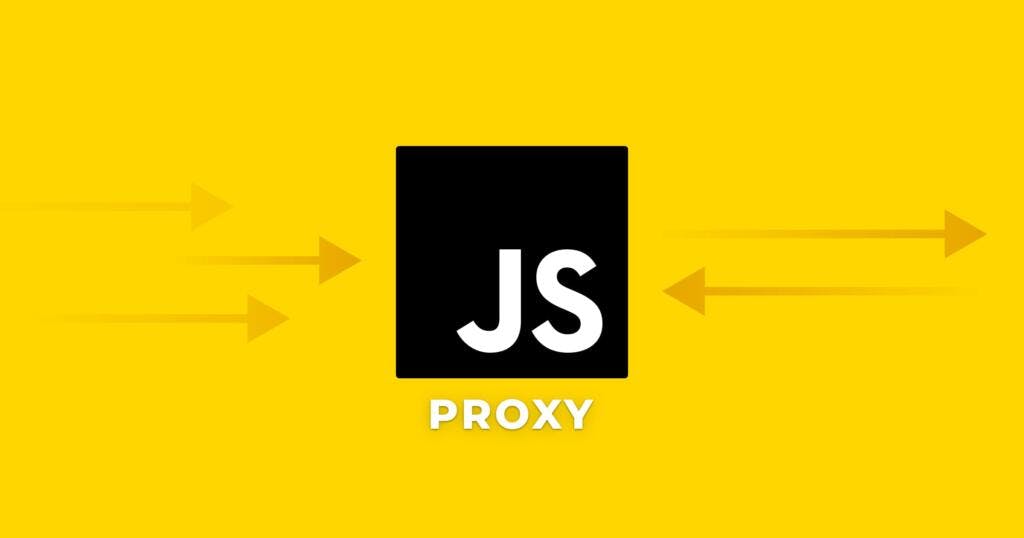You can create an object, by using the Proxy object which can replace the original one, but it may redefine basic operations on objects, such as defining, getting, and setting properties.
In JavaScript, a proxy object is essentially a middleman that stands in between an object that is being called and a calling object. This allows developers to intercept and change different actions taken on the object.
A JavaScript Proxy will allow you to define an Interface ontop of another javascript entity.With the help of the Proxy object, you can make a proxy for another object that can intercept and redefine some of its basic operations. Welcome back to outsideInn where we make complex topics simpler.
What Are Proxies Used for?

Javascript Proxies wrap around the original object and are used for two main reasons:
To control the access to the Object
To enhance Object functionality or provide additional behaviour
What is the Make-up of a javascript Proxy Object
We are going to be making use of a javascript Object Literal to introduce this
Handler: an object that specifies which operations will be intercepted and how to redefine intercepted operations.
Target: the original object that you wish to proxy.
const target = {
message1: "Upvote",
message2: "Donate",
};
const handler1 = {};
const proxy1 = new Proxy(target, handler1);
console.log(proxy1.message1); // Upvote
console.log(proxy1.message2); // Donate
As previously stated, a proxy encircles an object so that you can access it through the proxy. As the handler is empty, this proxy mimics the original target's behavior.
Let's start increasing our speed!
const target = {
message1: "Upvote",
message2: "Donate",
};
const handler3 = {
get(target, prop, receiver) {
if (prop === "message2") {
return "Donate";
}
return Reflect.get(...arguments);
},
};
const proxy = new Proxy(target, handler3);
console.log(proxy.message1); // Upvote
console.log(proxy.message2); // Donate
const target = { message1: "Upvote", message2: "Donate", }; const handler2 = { get(target, prop, receiver) { return "Love"; }, }; const proxy2 = new Proxy(target, handler2); console.log(proxy2.message1); // Love console.log(proxy2.message2); // LoveThe get() handler's implementation, which catches attempts to access the target's properties. We can give reflect.get if we choose not to modify the object's behavior.
Follow me on youTube:
-
Object Composition
Properties are gathered into objects. Nevertheless, the object defines some internal methods defining how it can be interacted with; the language does not supply any machinery to directly manipulate data stored in the Object. You can combine several objects into a single object with unique behavior by using a Proxy object. This makes it possible for programmers to construct complex objects out of reusable and modular parts.
The
xproperty is searched up the prototype chain.If
xis a data property, the property descriptor'svalueattricute is returned.If
xis an accessor property, the getter is invoked and the value of the getter is returned.
All objects have the following internal methods:
| Internal method | Corresponding trap |
[[GetPrototypeOf]] | getPrototypeOf() |
[[SetPrototypeOf]] | setPrototypeOf() |
[[IsExtensible]] | isExtensible() |
[[PreventExtensions]] | preventExtensions() |
[[GetOwnProperty]] | getOwnPropertyDescriptor() |
[[DefineOwnProperty]] | defineProperty() |
[[HasProperty]] | has() |
[[Get]] | get() |
[[Set]] | set() |
[[Delete]] | deleteProperty() |
[[OwnPropertyKeys]] | ownKeys() |
Function objects also have the following internal methods:
| Internal method | Corresponding trap |
[[Call]] | apply() |
[[Construct]] | construct() |
Conclusion

Properties are gathered into objects. Nevertheless, the object defines some internal methods defining how it can be interacted with; the language does not supply any machinery to directly manipulate data stored in the object.You can combine several objects into a single object with unique behavior by using a Proxy object. This makes it possible for programmers to construct complex objects out of reusable and modular parts.
connect with me on
Care to Donate
Ethereum address:
0x4Bc8C0C3e6d97175036353d87Fc0FF37b7B3C7Cf
